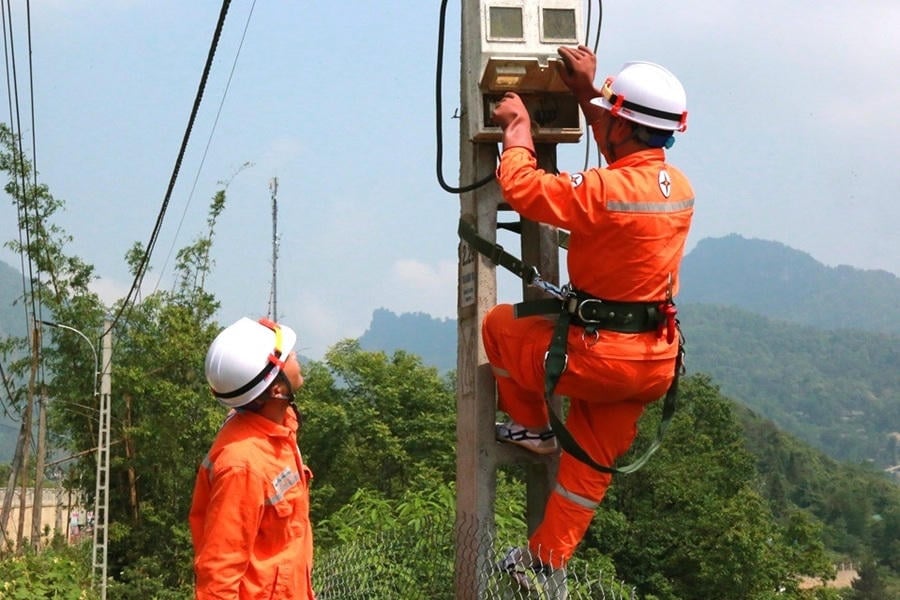
Infrastructure synchronization – A step forward in digital transformation of the Electricity industry
By the end of September 2025, Lao Cai PC is managing and operating 488,786 electronic meters, of which 482,183 meters are installed behind public transformer stations. These meters belong to three main manufacturers: Gelex , Huu Hong and Psmart, corresponding to three separate remote measurement systems that have been operating in parallel for many years. According to EVNNPC's plan, all remote measurement systems of the units will be converted to EVNHES - a central remote reading platform, capable of collecting, storing, processing and displaying metering data of millions of measuring points on the same system. This not only helps standardize remote measurement data, but also creates the basis for smart analysis applications, load forecasting and grid operation optimization.
Mr. Cao Binh Dinh - Deputy Director of PC Lao Cai emphasized: "Putting EVNHES into operation is a big step forward in terms of data management. For a mountainous area like Lao Cai, where there are hundreds of thousands of meters scattered in many complex terrains, unifying remote measurement data helps us increase control capabilities, detect errors early, reduce incident handling time and improve transparency in recording electricity indexes."
According to the report, PC Lao Cai has successfully converted 422,068/480,490 meters with remote measurement, reaching 87.84%, with a system-wide data collection rate of 92.5%.
Of which: Gelex meters have completed 100% conversion, with a collection rate of 97%; Huu Hong meters have achieved 94.02% conversion, with a collection rate of 88.9%; Psmart meters have achieved 72.35% conversion, with a collection rate of 91.8%. Compared to the time of independent operation of the supplier's HES, the data collection rate has decreased slightly, but this is the "transition" period between the two systems. When EVNHES operates stably and the equipment is upgraded synchronously, the collection rate will be quickly restored and improved.
Mr. Ha Thuong Sy - Head of PC Lao Cai Business Department said: "The positive point of EVNHES is that data is centralized at one point, making monitoring and operation much more convenient. We can monitor statistics, compare output and detect abnormal measurement points faster, thereby better supporting business operations and customer care."
According to Mr. Sy, in addition to the positive points of EVNHES, it is also necessary to talk about the challenges in the conversion process. First, there are limitations in equipment and technology: There are currently 41,587 Psmart meters of system 1.0 and 2.0 that do not meet EVNHES's communication standards; 4,907 meters have been upgraded to 3.0 but need time to verify stability; at the same time, there are 9,875 Huu Hong BKD meters and 2,053 PLC meters with communication errors due to interference or DCU that has not been successfully upgraded. According to Mr. Ha Thuong Sy, this is the most common limitation, "The old generation of meters of some companies are not fully compatible with the new platform, while replacing modules or DCUs requires direct support from the manufacturer. This makes the conversion progress dependent, especially in mountainous areas, when moving and technical operations are difficult."
Second is the difficulty in data operation and management: After conversion, replacing meters or updating measurement points must be declared in parallel on both CMIS and EVNHES systems, increasing the volume of operations. In addition, EVNHES has not yet fully integrated utilities such as: Reading current and voltage parameters in real time; displaying online/offline status of DCU or Repeater; daily output collection chart; data re-reading command feature to handle connection errors. These shortcomings make it difficult for the unit to be proactive in monitoring and analyzing the cause of data loss, especially when the system needs to process hundreds of thousands of measurement points per day.
Third is system stability and interaction: Some DCUs after switching to EVNHES have a "lack of data" situation even though there is no physical change. The main reason comes from the difference in data transmission and reception mechanism and synchronization time between DCU - HES - CMIS. PC Lao Cai has coordinated with EVNICT, NPCIT and manufacturers to handle each step, while maintaining the old system in parallel in the first phase to ensure continuity of power output data.
Faced with these challenges, PC Lao Cai has implemented synchronous solutions to overcome the above situation. Accordingly, the Unit has closely coordinated with IFC - the unit providing the upgrade module, to ensure timely equipment supply; the goal is to complete the upgrade of all Psmart meters before December 20, 2025. Establish an inter-departmental technical team, including the Business, Technical and IT Departments, responsible for monitoring, reviewing data, promptly detecting abnormal measurement points for remote handling. In addition, build a temporary internal process for parallel CMIS-EVNHES update operations, ensuring no interruption during the periodic meter replacement process. On the other hand, PC Lao Cai also proposed that EVNICT and NPCIT soon add CMIS-EVNHES data synchronization management tools, display equipment status, output charts, incident warnings, and DCU data rereading features.
Mr. Ha Thuong Sy added: “When EVNHES is fully equipped with support tools, technical staff at the local power plants will be more proactive in checking, operating and exploiting data. Our goal is to turn EVNHES into not only a remote reading system, but also a data analysis platform serving production and business.”
The role of EVNHES in the data governance model
EVNHES is designed with an open architecture, allowing the connection of millions of measurement points from many different types of meters through intermediate DCUs. The system not only collects electricity indexes, but also stores data on current, voltage, load charts and abnormal warnings - valuable input data sources for DMS, OMS, and Customer Portal systems in the future.
PC Lao Cai's early completion of the conversion to EVNHES will help synchronize data across the entire line from meter - DCU - HES - CMIS, forming a continuous data chain, serving the goal of smart operation, centralized data analysis and data-driven decision making (data-driven management).
According to experts, this operating model significantly reduces manual work, increases labor productivity, reduces errors in meter readings, and increases transparency in electricity payments. In the future, EVNHES can also integrate machine learning algorithms to analyze technical losses, detect electricity fraud, and warn of early incidents, thereby optimizing business efficiency.
PC Lao Cai identified EVNHES conversion as a key task in the digital transformation plan for the period 2025-2030. The unit set the goal: Complete 100% of meters after CC substations connected to EVNHES in 2025. Achieve a stable data collection rate of over 98% from 2026. Synchronously integrate EVNHES data with CMIS, OMS, and DMS to serve production and business operations. Mr. Cao Binh Dinh - Deputy Director of PC Lao Cai affirmed: "EVNHES conversion is not simply a change in technical tools, but a shift in management methods. When data becomes the center, all activities from operations, business to customer service are based on a unified and accurate database. That is the foundation for digital enterprises in the Electricity industry."
The EVNHES transformation at PC Lao Cai is a clear demonstration of EVNNPC's determination to transform digitally. From a distributed remote reading system, the unit is moving towards a unified, transparent data infrastructure and is ready to integrate smart analysis tools. When EVNHES is completed, PC Lao Cai will not only collect more accurate data, but also proactively forecast, analyze and optimize grid operations, towards the model of digital grid - digital enterprise - digital customer.
Source: https://daidoanket.vn/pc-lao-cai-day-manh-chuyen-doi-so-he-thong-doc-xa-cong-to-sang-evnhes-hoan-thien-nen-tang-du-lieu-cho-luoi-dien-so.html


















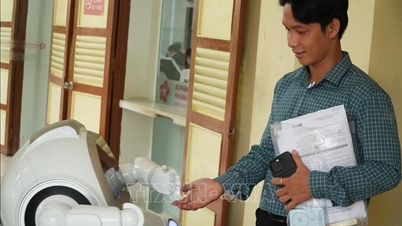




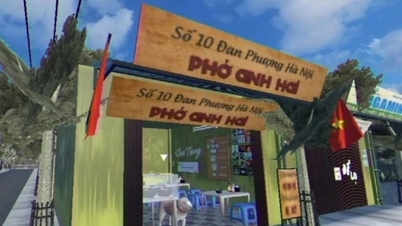











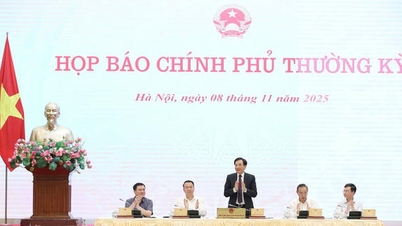

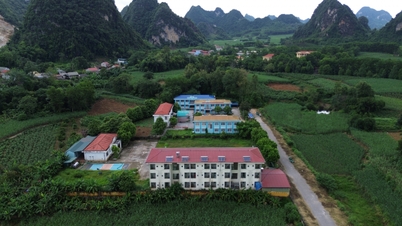











![[Video] Hue Monuments reopen to welcome visitors](https://vphoto.vietnam.vn/thumb/402x226/vietnam/resource/IMAGE/2025/11/05/1762301089171_dung01-05-43-09still013-jpg.webp)








































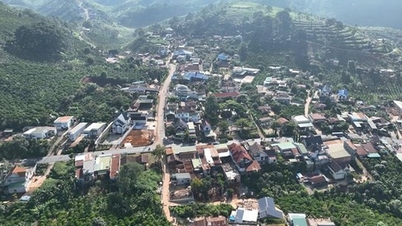




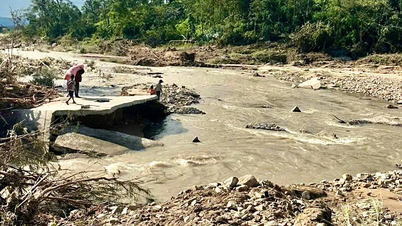



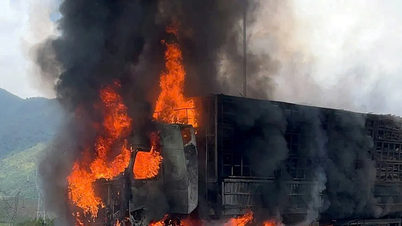
![Dong Nai OCOP transition: [Part 2] Opening new distribution channel](https://vphoto.vietnam.vn/thumb/402x226/vietnam/resource/IMAGE/2025/11/09/1762655780766_4613-anh-1_20240803100041-nongnghiep-154608.jpeg)













Comment (0)